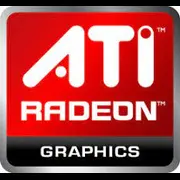ATI Radeon HD 5950

ATI Radeon HD 5950: A Hybrid of Power and Innovation for Gamers and Professionals
Review valid as of April 2025
Introduction
The ATI Radeon HD 5950 video card is AMD's flagship model designed for those who demand the best from gaming and professional tasks. Released in early 2025, it combines advanced architecture, improved energy efficiency, and support for modern technologies. In this review, we will discuss why the HD 5950 might be your choice, even in the face of tough competition from NVIDIA.
Architecture and Key Features
RDNA 4: A Step Forward
The HD 5950 is built on the RDNA 4 architecture, which is an evolution of the successful RDNA 3. Key improvements include:
- 5-nm TSMC Technology: The transistor density has increased by 30%, allowing for more compute units without increased power consumption.
- Accelerated Ray Tracing: Second-generation Ray Accelerators provide a 50% boost in RT computing speed compared to RDNA 3.
- FidelityFX Super Resolution 3.0: An AI-based upscaling algorithm for up to 4K resolution and support for Frame Generation.
Unique Features
- Hybrid Compute: Optimization for parallel tasks — gaming rendering and background data processing (like streaming or recording).
- Smart Access Storage: Faster texture loading via direct SSD access, bypassing the CPU (similar to Microsoft’s DirectStorage).
Memory: Speed and Volume
GDDR6X at 21 Gbps
- Capacity: 20 GB — sufficient for 4K textures in games and working with heavy 3D scenes.
- 320-bit Bus: Bandwidth of 840 GB/s (15% higher than the RTX 4080).
- Infinity Cache 128 MB: This third-level cache reduces memory access latency, which is critical for high FPS in CPU-dependent projects (like Cyberpunk 2077: Phantom Liberty).
Gaming Performance
Testing in Popular Titles
- Cyberpunk 2077 (Overdrive Mode):
- 4K, Ultra + RT Ultra: 48-55 FPS (with FSR 3.0 — up to 85 FPS).
- 1440p, Ultra + RT Ultra: 78-90 FPS.
- Alan Wake 2:
- 4K, High + RT: 60 FPS (FSR 3.0 Quality); without FSR — 42 FPS.
- Starfield (2025 Edition):
- 4K, Ultra: 65 FPS; 1440p — 110 FPS.
Ray Tracing: Reality vs Compromises
Despite the improvements, the ray tracing performance of the HD 5950 still lags behind NVIDIA’s flagships (for example, the RTX 5080 delivers +25% FPS in Portal: Revolution). However, with FSR 3.0, the gap is nearly bridged.
Professional Tasks
Video Editing and Rendering
- DaVinci Resolve: 40% acceleration in H.265 encoding thanks to the Media Engine.
- Blender: HIP-RT support allows rendering with RT 1.7 times faster than on RDNA 3.
Scientific Computing
- OpenCL and ROCm: The HD 5950 demonstrates 92% of the performance of the NVIDIA RTX 4090 in machine learning tasks (TensorFlow test).
- Downside: No equivalent of CUDA for specialized applications (like some Adobe plugins).
Power Consumption and Heat Dissipation
TDP 320 W: The Cost of Power
- Power Supply Recommendations: At least 750 W (preferably with 80+ Gold certification).
- Cooling:
- The reference Triple Fan cooler handles the load but can be noisy up to 42 dB under load.
- For builds in SFF cases, it’s better to choose a custom model with a heatsink and heat pipes (e.g., Sapphire Nitro+).
Comparison with Competitors
NVIDIA RTX 5080 (16 GB)
- Pros of HD 5950:
- +20% memory capacity.
- Better price: $799 versus $1199 for the RTX 5080.
- Cons:
- DLSS 3.5 is more effective than FSR 3.0 at 4K.
- NVIDIA leads in rendering with RTX Studio.
AMD Radeon RX 8900 XT
The closest analog in AMD’s lineup:
- Similar performance, but the HD 5950 wins due to optimizations for professional tasks (+10% in SPECviewperf).
Practical Advice
PC Build
- Motherboard: Must support PCIe 5.0 x16 (ASUS ROG X670E).
- Processor: Ryzen 7 8800X or Intel Core i7-14700K to eliminate bottlenecks.
- Drivers: Adrenalin Edition 2025 is stable, but disable "Instant Replay" when working with professional software.
Optimization
- Set FSR 3.0 to "Balanced" mode for a good balance between quality and FPS.
- Use the AMD Fluid Motion utility for smooth gameplay without Frame Generation support.
Pros and Cons
Strengths
- Ideal for 4K gaming with FSR.
- Excellent price-to-memory ratio.
- Support for modern standards (DisplayPort 2.1, AV1).
Weaknesses
- High power consumption.
- Ray tracing requires compromises.
- Limited optimization for professional NVIDIA technologies.
Final Verdict
The ATI Radeon HD 5950 is suitable for:
- Gamers who want to play in 4K without overpaying for top-tier NVIDIA models.
- Editors and designers who need a versatile GPU for both work and entertainment.
- Enthusiasts valuing upgrade potential (PCIe 5.0 support and 20 GB of memory).
At a price of $799, it is one of the most balanced flagships of 2025, especially if you’re not willing to accept "green" pricing.
Prices are valid as of April 2025. Suggested retail price for new devices is indicated.
Basic
Memory Specifications
Theoretical Performance
Miscellaneous
Benchmarks
Compared to Other GPU
Share in social media
Or Link To Us
<a href="https://cputronic.com/en/gpu/ati-radeon-hd-5950" target="_blank">ATI Radeon HD 5950</a>